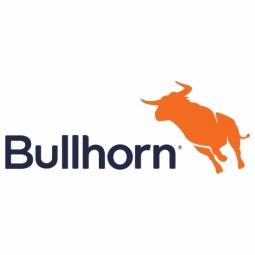Applicable Functions
- Human Resources
Use Cases
- Inventory Management
Services
- System Integration
About The Customer
Mee Derby & Company is a unique organization in the United States, specializing in recruiting professionals for the staffing industry nationwide. The company is known for its rapid growth, consistently outpacing the industry average. This growth, while a testament to the company's success, also presents unique challenges in terms of technology and scalability. Mee Derby needed a technology solution that could keep pace with its expansion, a solution that was reliable, high-performing, and user-friendly. The company's need for standardized processes and speed was critical to its ongoing success.
The Challenge
Mee Derby & Company, a leading recruiting organization for the staffing industry in the United States, was facing a significant challenge. The company was growing at a rate above the industry average and needed a technology solution that could keep pace with this rapid expansion. However, they lacked a reliable, high-performance system that was both fast and user-friendly. Their processes were not standardized, and the lack of speed was negatively impacting their performance. The company needed a solution that could scale with their growth without requiring additional resources, a solution that would not present a barrier to their ongoing expansion.
The Solution
Bullhorn, a global leader in On Demand staffing and recruiting software, provided the solution Mee Derby needed. Bullhorn's software combined all the applications Mee Derby required, including integrated email, sourcing, applicant tracking, calendaring, task management, job management, and CRM, into one integrated solution. This solution not only standardized processes but also adapted to individual needs. Delivered as Software-as-a-Service, Bullhorn was able to scale effortlessly with Mee Derby's rapid growth and was accessible from any location at any time. This provided Mee Derby with a competitive advantage, as Bullhorn clients consistently achieve the highest placement rates in the industry.
Operational Impact
Quantitative Benefit

Case Study missing?
Start adding your own!
Register with your work email and create a new case study profile for your business.
Related Case Studies.

Case Study
Hospital Inventory Management
The hospital supply chain team is responsible for ensuring that the right medical supplies are readily available to clinicians when and where needed, and to do so in the most efficient manner possible. However, many of the systems and processes in use at the cancer center for supply chain management were not best suited to support these goals. Barcoding technology, a commonly used method for inventory management of medical supplies, is labor intensive, time consuming, does not provide real-time visibility into inventory levels and can be prone to error. Consequently, the lack of accurate and real-time visibility into inventory levels across multiple supply rooms in multiple hospital facilities creates additional inefficiency in the system causing over-ordering, hoarding, and wasted supplies. Other sources of waste and cost were also identified as candidates for improvement. Existing systems and processes did not provide adequate security for high-cost inventory within the hospital, which was another driver of cost. A lack of visibility into expiration dates for supplies resulted in supplies being wasted due to past expiry dates. Storage of supplies was also a key consideration given the location of the cancer center’s facilities in a dense urban setting, where space is always at a premium. In order to address the challenges outlined above, the hospital sought a solution that would provide real-time inventory information with high levels of accuracy, reduce the level of manual effort required and enable data driven decision making to ensure that the right supplies were readily available to clinicians in the right location at the right time.

Case Study
Hardware Retailer Uses Data Warehouse to Track Inventory
Ace tracked which products retailers ordered, when they were ordered and shipped. However, the company could not track or forecast actual sales. Data used for reporting was up to a one-week old, owing to performance and data cleansing issues. Requirement to integrate wholesale and inventory data with POS data to help drive key business decisions, improve category management, lower inventory costs and optimize pricing. Reliance on custom coding to integrate POS data was excessively resource intensive and led to major performance constraints.

Case Study
Remake Enterprise-to-production System
The client was running a legacy material flow tracking system and wanted to replace the system with a more effective one as the system was increasingly expensive to maintain and support and also was not extendable. The client's IT landscape was filled with modern applications and it was difficult to interface the material flow tracking system with modern applications.

Case Study
Expertech - Capital Tool Inventory
Costly tools used to splice fiber optic cables are an important part of Expertech’s operational and capitalized expenses, but the company did not have an automated system in place to track their tools and optimize their usage. The existing data in its tracking system was inaccurate and required manual updating, making it essential for the company to implement an efficient process to track and follow up on its capital tool inventory.









